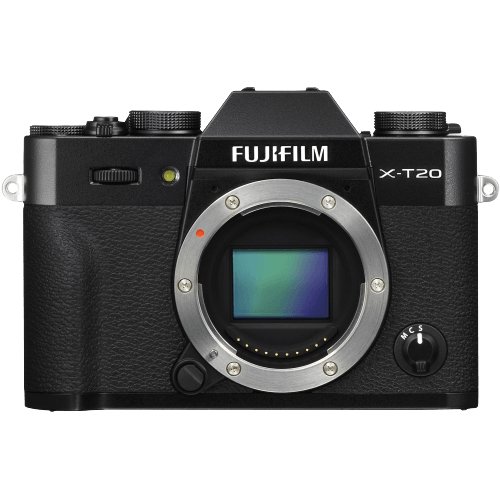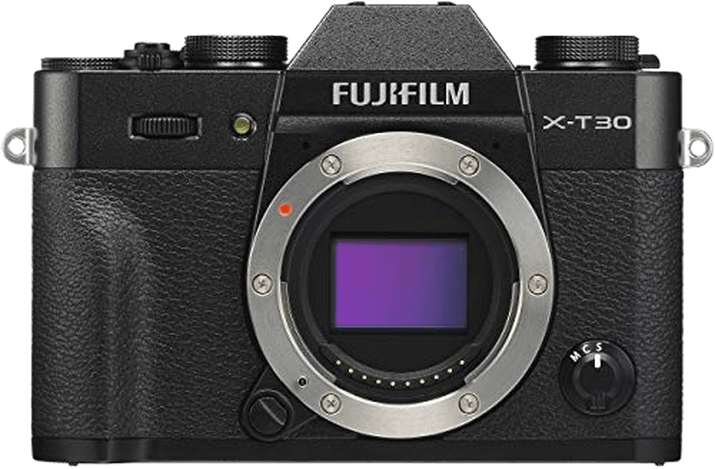Fujifilm X-T20 vs X-T30 Comparison
Fujifilm X-T20

Fujifilm X-T30

The Fujifilm X-T30 emerges as the winner with a score of 65/100, compared to the X-T20’s score of 63/100. Both cameras are mirrorless and were launched at similar price points ($899 for the X-T30 and $900 for the X-T20). They share the same size (118 x 83mm) and weight (383g / 0.84lbs).
The X-T30’s advantage lies in its newer release year (2019), making it a more recent model than the X-T20 (2017). This suggests improved features and technology in the X-T30. However, the X-T20 has a slightly slimmer depth (41mm) compared to the X-T30 (47mm), which could be seen as a benefit for those seeking a more compact camera.
Considering the two-point difference in scores and the similarities in specifications, the choice between the Fujifilm X-T20 and X-T30 may come down to personal preferences and priorities, such as the importance of a newer model or a slimmer design.
Fujifilm X-T20 vs X-T30 Overview and Optics
The Fujifilm X-T30 wins the optics comparison with a score of 67/100, slightly edging out the Fujifilm X-T20, which scores 65/100. Both cameras share several specifications, including the CMOS sensor type, APS-C sensor size, Fujifilm X lens mount, and lack of image stabilization.
The X-T30 outperforms the X-T20 in two key areas: megapixels and shooting speed. With 26 megapixels, the X-T30 offers a higher resolution than the X-T20’s 24 megapixels, providing more detail and better image quality. Additionally, the X-T30 boasts an impressive shooting speed of 30 frames per second, which is significantly faster than the X-T20’s 8 frames per second. This makes the X-T30 a superior choice for action photography and situations where capturing fast-moving subjects is crucial.
On the other hand, the X-T20 still has some advantages over the X-T30. It uses the X-Processor Pro, which, while not as advanced as the X-T30’s X-Processor 4, still delivers excellent performance and image quality. However, the differences in processors do not significantly impact the overall performance of the cameras, keeping the X-T20 competitive in this regard.
The Fujifilm X-T30 ultimately offers better optics performance than the X-T20, thanks to its higher resolution and faster shooting speed. While the X-T20 remains a capable camera with a strong processor, the X-T30’s advantages make it the superior choice for photographers seeking the best possible image quality and performance in this comparison.
Fujifilm X-T20 vs X-T30 Video Performance
The Fujifilm X-T30 outperforms the Fujifilm X-T20 in video capabilities, scoring 91/100 compared to the X-T20’s 83/100. Both cameras share some common features, including 4K maximum video resolution and built-in time-lapse functionality. However, the X-T30 surpasses the X-T20 in several aspects, making it a better choice for videographers.
The X-T30 has a higher maximum video resolution of 4096 x 2160, while the X-T20 offers 3840 x 2160. This difference allows the X-T30 to capture more detail and provide better overall video quality. Additionally, the X-T30 boasts a higher maximum video frame rate of 120fps, doubling the X-T20’s 60fps. This increased frame rate enables the X-T30 to provide smoother slow-motion footage and more versatile shooting options.
Despite the X-T20’s lower score and specifications, it remains a capable camera for video work. Its 4K resolution and 60fps frame rate are still suitable for most videography needs. Furthermore, the built-in time-lapse functionality is a valuable feature that both cameras share.
Considering the differences in video capabilities, the Fujifilm X-T30 is the clear winner, offering higher resolution and frame rate options. Videographers seeking improved video quality and versatility should opt for the X-T30. However, if these enhancements are not a priority, the X-T20 remains a viable option with satisfactory video features.
Fujifilm X-T20 vs X-T30 Features and Benefits
The Fujifilm X-T20 and X-T30 both score 70/100 in terms of features, indicating that they share similarities in this aspect. Both cameras have a 3-inch screen size and a screen resolution of 1,040,000 dots. Additionally, they both have touchscreen capabilities, flip screens, WIFI, and Bluetooth connectivity.
However, the X-T20 has a GPS feature, which the X-T30 lacks. This makes the X-T20 better for users who want to geotag their photos or need location information for their work. The presence of GPS in the X-T20 gives it an advantage over the X-T30.
On the other hand, the X-T30 does not have any specific features that make it better than the X-T20. Both cameras are equal in most aspects, making it difficult to determine a clear winner solely based on features.
It is essential to consider other factors such as image quality, performance, and price when choosing between these two cameras. The X-T20’s additional GPS feature may be beneficial for some users, but it may not be a deciding factor for others. The X-T30’s lack of GPS does not necessarily make it an inferior camera, as both models share many other similar features. Ultimately, the choice between the Fujifilm X-T20 and X-T30 comes down to individual preferences and needs.
Fujifilm X-T20 vs X-T30 Storage and Battery
The Fujifilm X-T30 outperforms the X-T20 in storage and battery, scoring 35/100 compared to the X-T20’s 21/100. Both cameras have one memory card slot and accept SD, SDHC, and SDXC cards. However, the X-T20 is compatible with UHS-II cards, while the X-T30 only supports UHS-I cards.
The X-T30 has a longer battery life, providing 380 shots per charge, while the X-T20 offers 350 shots. Both cameras use the NP-W126S battery type. The X-T30 has the advantage of USB charging, which the X-T20 lacks.
Despite the X-T20’s lower storage and battery score, its compatibility with faster UHS-II memory cards is an advantage over the X-T30. This can improve performance in high-speed photography and video recording.
Taking all factors into account, the Fujifilm X-T30 offers better battery life and USB charging capabilities, while the X-T20 has the advantage of faster memory card compatibility.
Fujifilm X-T20 vs X-T30 – Our Verdict
Are you still undecided about which camera is right for you? Have a look at these popular comparisons that feature the Fujifilm X-T20 or the Fujifilm X-T30:

